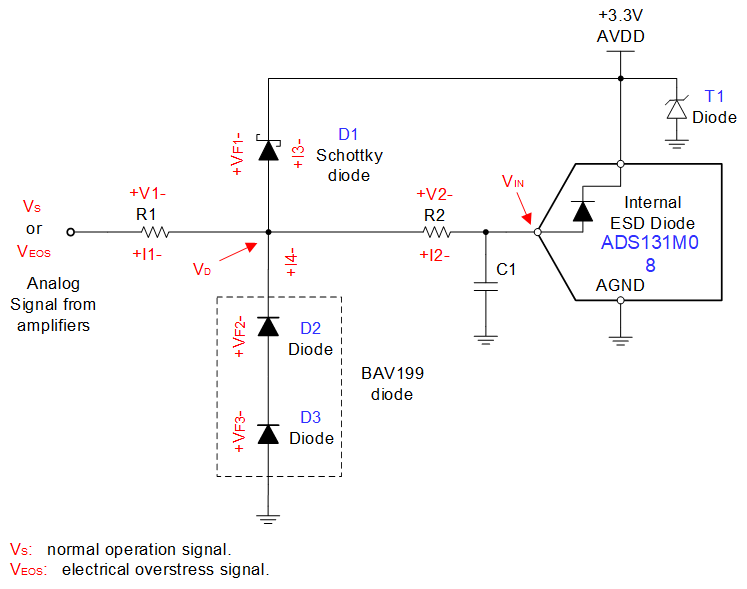SBAA506 March 2021 ADS131B04-Q1 , ADS131M02 , ADS131M03 , ADS131M04 , ADS131M06 , ADS131M08
Design Notes
- The BAT54 Schottky diode (D1) is selected to protect the ADS131M08 from positive electrical overstress signals because it has lower forward voltage, lower leakage current, and lower capacitance than conventional transient voltage suppressor (TVS) diodes, which can minimize the additional errors caused by these factors.
- The BAV199 dual series switching diode with a typical 0.9-V forward voltage at 1-mA forward current is selected for D2 and D3 to protect the ADC from negative overstress signals in this design. The BAT54 Schottky diode features a typical 0.3-V forward voltage at 1-mA forward current, so four single Schottky diodes (BAT54) can be used against negative overstress signals as an alternative solution.
- The series resistors (R1 and R2) are used to limit fault current for protecting the diodes and the ADC. They also help to clamp the input overstress signal on the diodes by selecting a proper resistance.
- Select a C0G type capacitor for C1 in the front-end RC filter to minimize the distortion because the capacitance of the C0G capacitor is more stable and the voltage, frequency, and temperature coefficient of the C0G capacitor are smaller than other type capacitors including X7R, X5R and Z5U.
- A TVS or Zener diode (T1) is recommended for the power supply clamp as the power supply may not be able to sink the fault current that feeds through the protection diode (D1) and internal ESD diode on the ADC.
- See the Electrical Overstress on Data Converters video in the TI Precision Labs - ADCs video series for a theoretical explanation of overstress on data converters. This series discusses details on protection solutions for different types of ADCs, including diode selection and current-limiting resistor selection.
